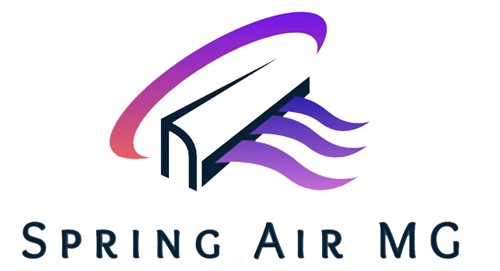Between spring pollen, humid summers, and frequent renovations, Falls Church homes collect a surprising amount of debris inside HVAC systems. When dust, dander, and fine construction particles hide in returns and branch lines, they circulate through rooms, aggravate allergies, and strain equipment. Here is a clear, no-nonsense comparison of professional cleaning and DIY so you can protect both your family and your HVAC.
Why Duct Hygiene Matters in Falls Church
- Allergies and asthma: Pollen and pet dander trapped in ducts can trigger symptoms when the blower starts.
- Odors and moisture: Musty smells at startup often point to debris plus humidity in supply or return lines.
- Energy waste: Restricted airflow increases run time and utility bills.
- Equipment wear: Dirty blower housings and coils work harder and fail sooner.
- What Is Safe to Do Yourself
DIY is great for surface level maintenance, not deep system cleaning.
- Change filters on time: Every 1 to 3 months in peak seasons. Consider MERV 11 to MERV 13 if your system allows it.
- Vacuum and wash grilles: Remove and clean supply and return covers. Wipe surrounding wall areas.
- Clean reachable floor registers: Light vacuuming of visible debris is fine.
- Keep returns clear: Do not block with furniture or drapes.
- Watch humidity: Aim for 40 to 50 percent indoor RH to reduce condensation and musty odors.
What You Should Avoid
Deep cleaning is not a shop-vac job. Skip these to protect your ducts and your health.
- Inserting consumer hoses deep into ducts: Can tear flexible ducting, dislodge joints, or push debris deeper.
- Using harsh chemicals or foggers: Residues can circulate through living spaces and irritate lungs.
- Blowing compressed air without containment: Aerosolizes dust and spreads it across the home.
- Handling suspected mold or pest debris without PPE: Requires proper controls and disposal.
- Working near asbestos, lead paint, or unknown insulation: Leave to trained professionals.
Professional Cleaning: How It Works and Why It Is Safer
A quality provider does more than vacuum a few vents.
- Inspection and access: Identify duct materials and condition, confirm complaints, and create clean access points.
- Containment and negative pressure: A high CFM HEPA vacuum attaches to trunk lines so debris travels into sealed filtration, not the living space.
- Mechanical agitation: Rotary brushes and air whips dislodge buildup from supply and return lines.
- Component attention: Blower compartment and return plenum are cleaned. Coil cleaning is added when needed.
- Verification: Visual checks and photos confirm clean interior surfaces and restored airflow.
Time on site: About 2 to 3 hours for many condos and townhomes, 3 to 4 hours for most single-family homes.
Typical pricing in the region: Often 400 to 800 dollars for many homes, higher for very large or heavily contaminated systems.
Health and Safety Notes
- Mold or strong musty odor: Fix the moisture source first. If antimicrobial treatment is recommended, it should be EPA registered and applied according to label directions.
- Post-renovation dust: Drywall and sanding create ultra-fine particles that lodge in returns. Schedule a post-construction clean for a healthier baseline.
- Sensitive occupants: For infants, elders, or allergy-asthma households, prefer professional negative-pressure cleaning to avoid re-aerosolizing contaminants during DIY attempts.
Choosing the Right Company
- Ask how negative pressure is established and which agitation tools are used.
- Confirm both supply and return sides are cleaned and that the blower area is addressed.
- Request before and after photos.
- Verify experience with your duct type, especially flex or lined ducts common in the area.
- Get a clear written estimate. Be cautious with ultra-low teaser prices.
Prevention After Cleaning
- Upgrade filtration if your blower can handle it.
- Change filters on schedule and keep returns unobstructed.
- Seal accessible duct leaks in attics and crawlspaces to reduce dust intrusion and energy loss.
- Maintain coils and condensate drains each cooling season.
- Plan a quick check after future sanding, drywall, or floor work.
FAQs
Will cleaning eliminate every odor or dust problem?
It usually helps a lot, but source control matters. Address humidity, improve filtration, and service coils and drains.
Can DIY ever replace professional cleaning?
DIY handles surface hygiene. Only professional negative-pressure cleaning can remove accumulated debris throughout the system without spreading it.
Will cleaning damage my ducts?
Not when done correctly. Pros match tools and pressure to rigid metal, flex, or lined duct and inspect for pre-existing damage.
The Bottom Line for Falls Church
DIY is perfect for filters, grilles, and simple housekeeping. For deep system cleaning that protects indoor air and your equipment, professional negative-pressure service is the safer path for your family and your HVAC.
